Unique Team Traits: The Kings provided each other with support while smashing into everyone else
theScore’s multi-part team previews include a look at something that separates each team from the pack. From specific breakouts to power-play formations and beyond, Justin Bourne and Thomas Drance hope to highlight something you haven’t noticed in the past.
What we noticed
The Los Angeles Kings used strong forward support all over the ice to advance zones
Despite struggling to score and finishing only sixth in the West in the regular season, there were few statistical categories that showed the 2013-14 Kings to be anything less than elite. They rarely gave up shots, let alone goals, and they absolutely dominated through the middle of the ice. They were large, they were smart, and they were just a general bitch to play. That’s a pretty good formula for winning the Cup.
It seems as though the tough Pacific Division taught them some valuable lessons heading into playoffs. You can’t score from your own zone, and it’s pretty hard from the neutral zone, so before we do anything, let’s concentrate on moving the puck up the ice, and go to work from there.
Advancing zones takes support, and the Kings offered each other that in spades.
The numbers
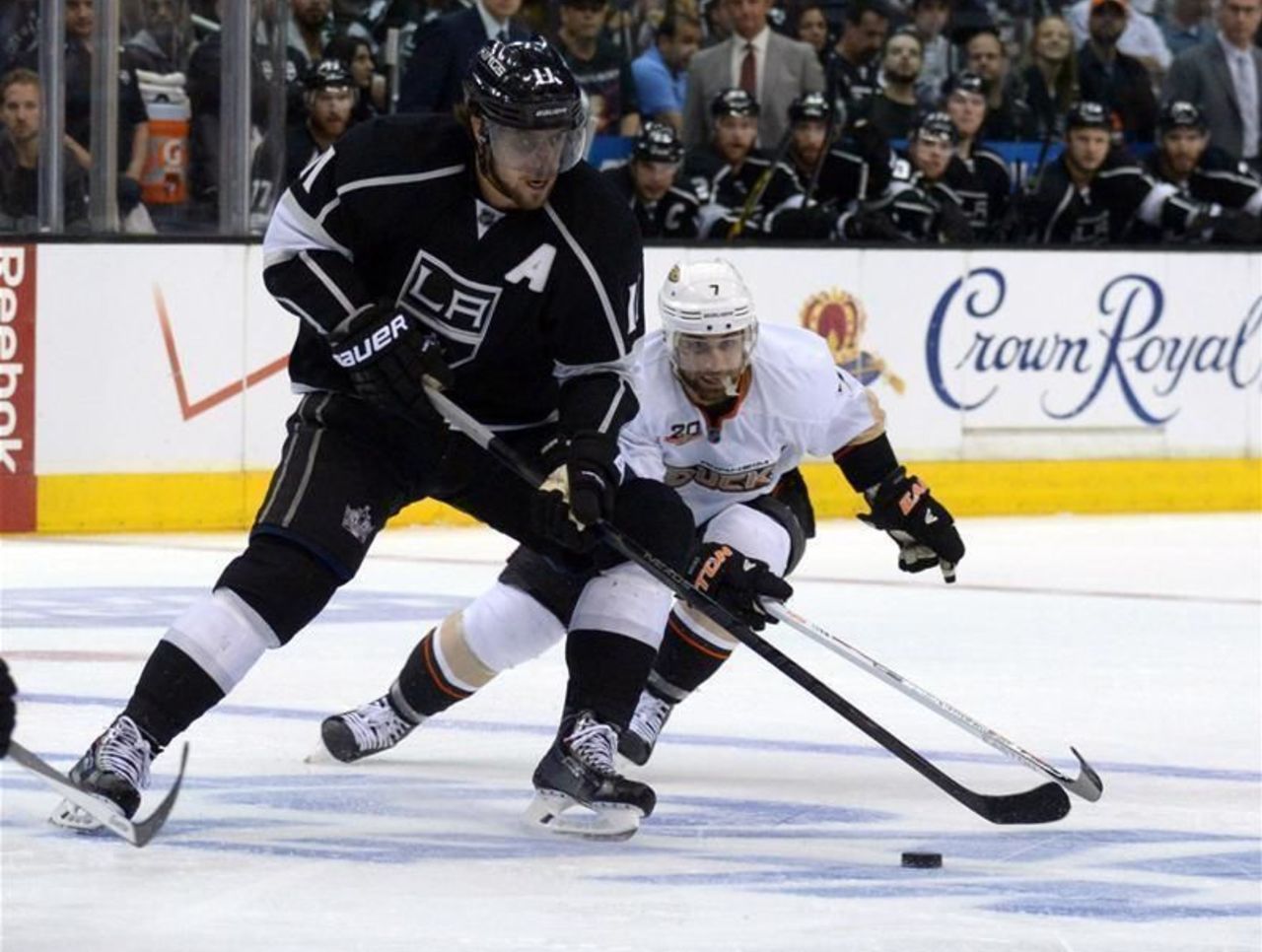
The Kings have been the league's premiere "puck possession" club at even-strength for several years now. During the 2013-14 season the Kings led the NHL by controlling 56.8 percent of total shot attempts at evens (psst … that’s Corsi). It’s tough to win a game when you’re on the other side of that.
The Kings excelled at entering the zone, which is made evident by their 0.51 shots per zone entry attempt - that number was second best in the league behind only the San Jose Sharks. The Kings were also the third best team at generating shots on controlled entries, behind only the Sharks and the New York Rangers.
A partial cause of that? They only carried it in when there was room, as they loved to dump the puck. They were in the bottom five in “entries with control,” which was just fine because they were the second-best team at generating shots off dump-ins. (Have rumors of the death of dump and chase been greatly exaggerated?)
The Kings just flat-out won the neutral zone. By @shutdownline's data, through January 19th the Kings had the highest differential in entry attempts for versus entry attempts against with a plus-281 mark that put them behind only the Detroit Red Wings and the Chicago Blackhawks.
This combination of factors allowed the Kings to outshoot their opponents to a nearly unprecedented degree (since advanced stat sites started popping up online - the so called “Behind the Net era" - only three teams did better).
Two notes on individuals before we explain why:
Justin Williams is a bit of a stud. He was the team’s best at zone exits, and was the Kings best top-six forward at generating shots off zone entries.
Anze Kopitar might be the second best dump and chase forward in the NHL (behind Alexander Ovechkin). The Kings managed 0.47 shots per Kopitar dump in - for context the best team mark was San Jose's 0.37 - and he also handled the bulk of Los Angeles' controlled entry burden.
The breakdown
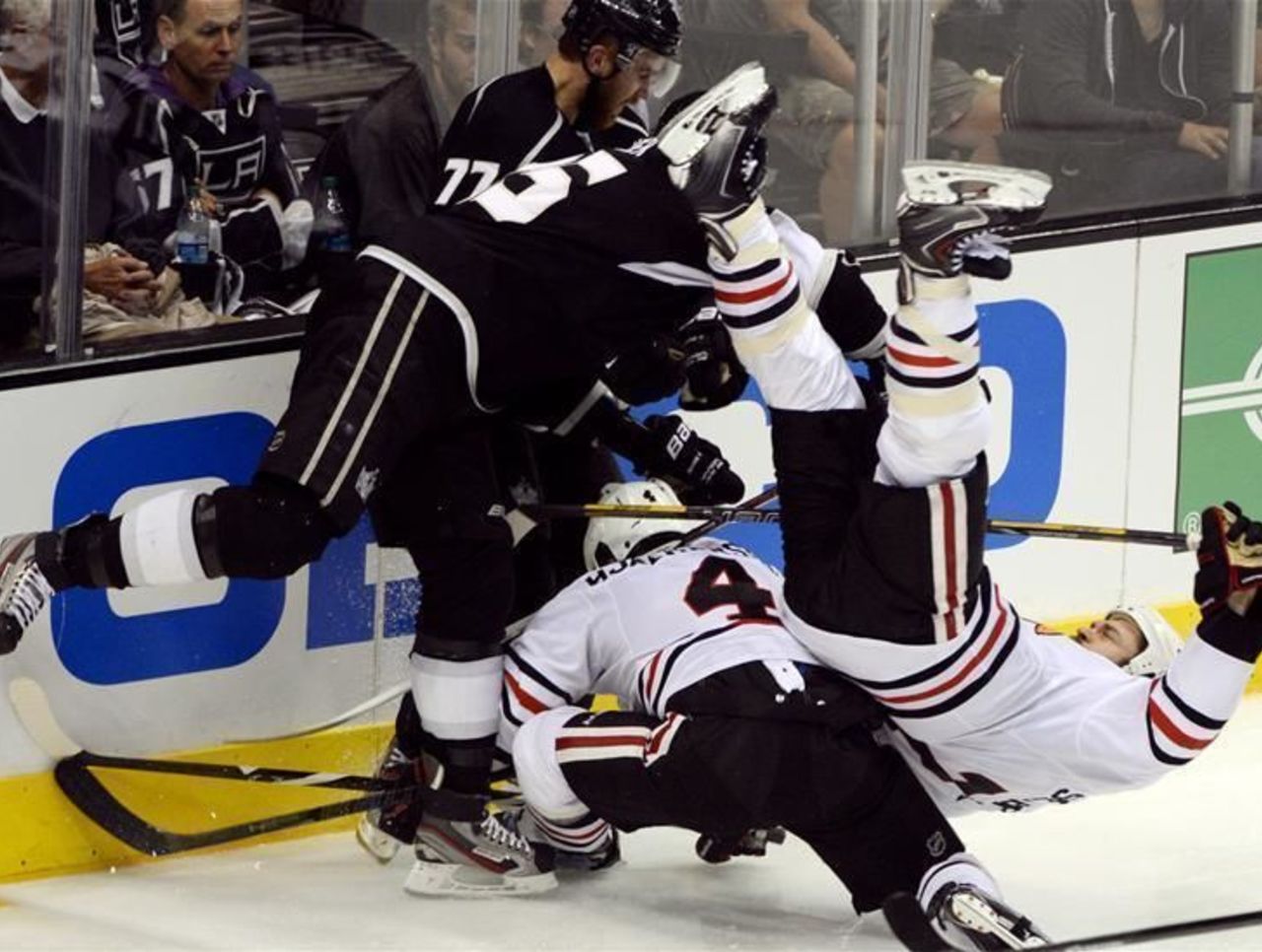
Some teams (the 2013-14 Toronto Maple Leafs come to mind) prefer to leave the weak side winger on the weak side of the ice. There are benefits. Neutral zone forechecks are designed to herd the puck and people into an area on the icing-side of the red-line, meaning there’s a lot of congestion in a small area. That also means there’s no congestion on the other side of the ice, so if you can get the puck over there, you can really open up the throttle. I see you, Kessel.
The problem is, those benefits are rarely realized. It involves making a cross-ice pass, and it involves having the time to put some oomph on the puck. Who has that kind of time and space in the NHL?
The Kings feast on the opposite. They bring their weakside winger all the way across the ice to support the puck, and they have their center fill the middle lane, which allows them more options and more bodies to help advance the zone. And step-by-step, chip by short pass, they tend to succeed.
Here’s a few stills before we get to them fancy movin’ pictures.
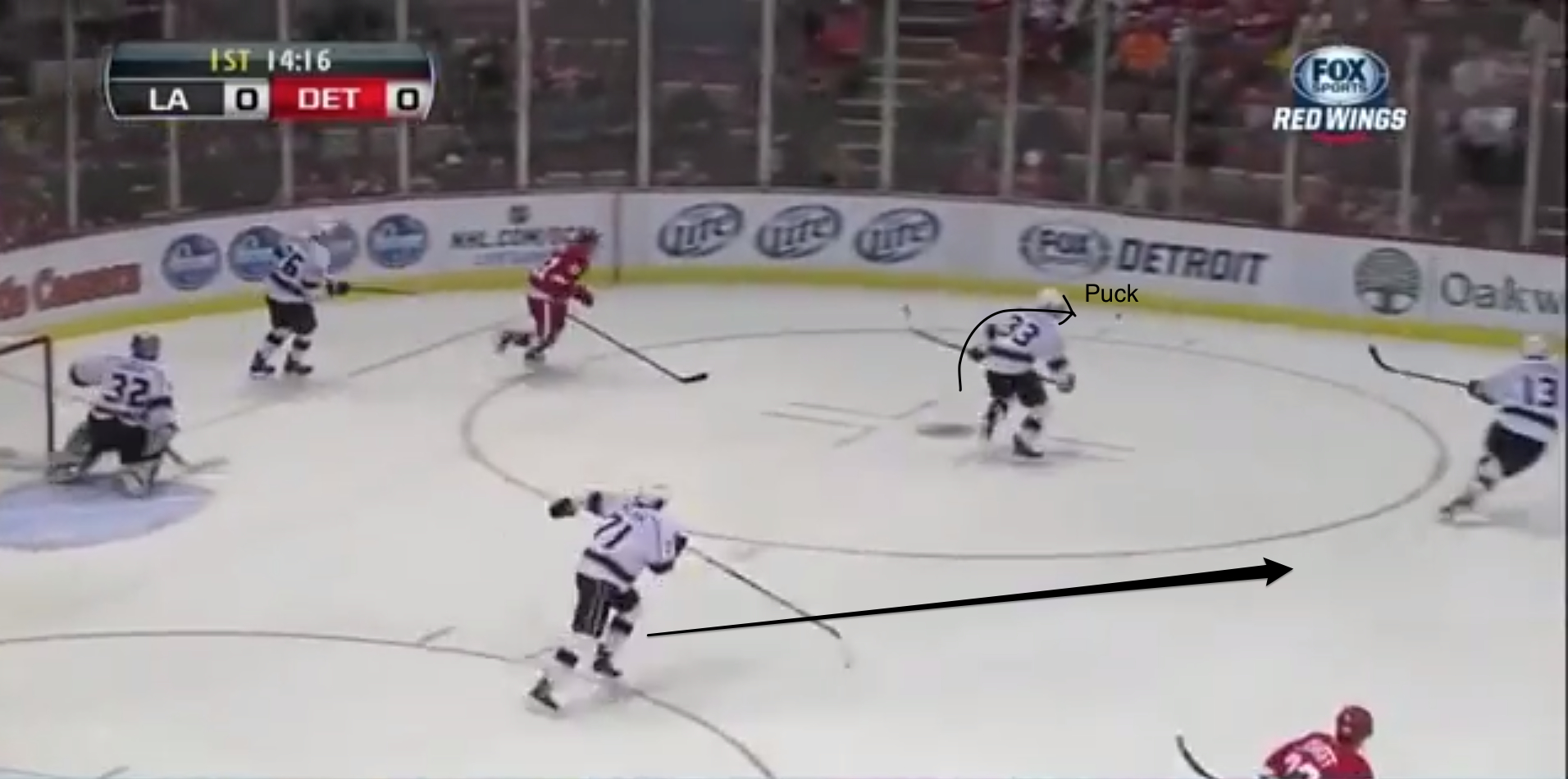
Jordan Nolan sees his teammate is about to get a touch on the puck, so as weakside winger, he knows to give him an option (instead of branching out wide).
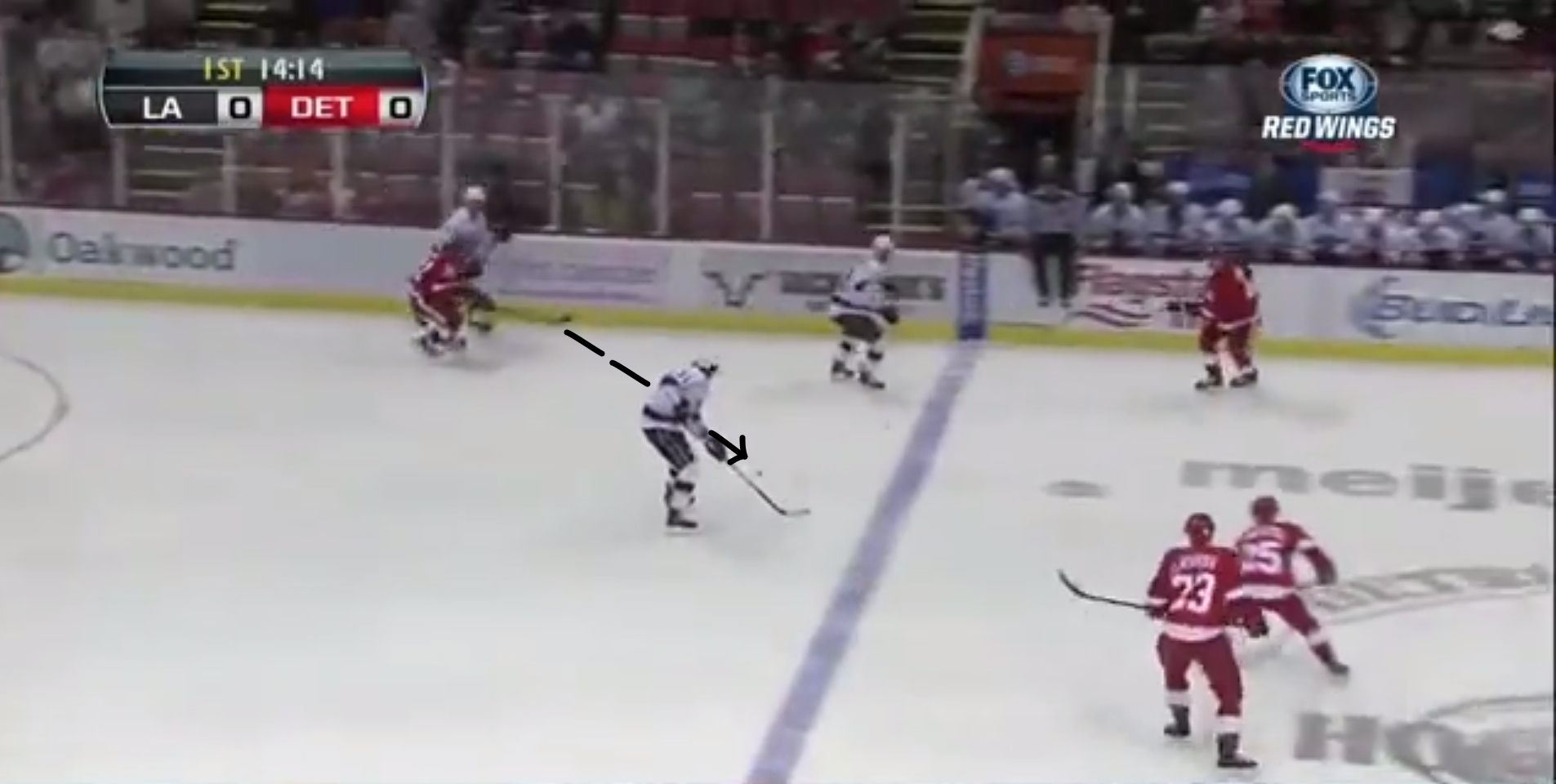
They’re easily out of the zone, and he’s got a player with him if he wants to chip it into an area behind the D to advance another one.
Another example. Puck carrier on the wall...
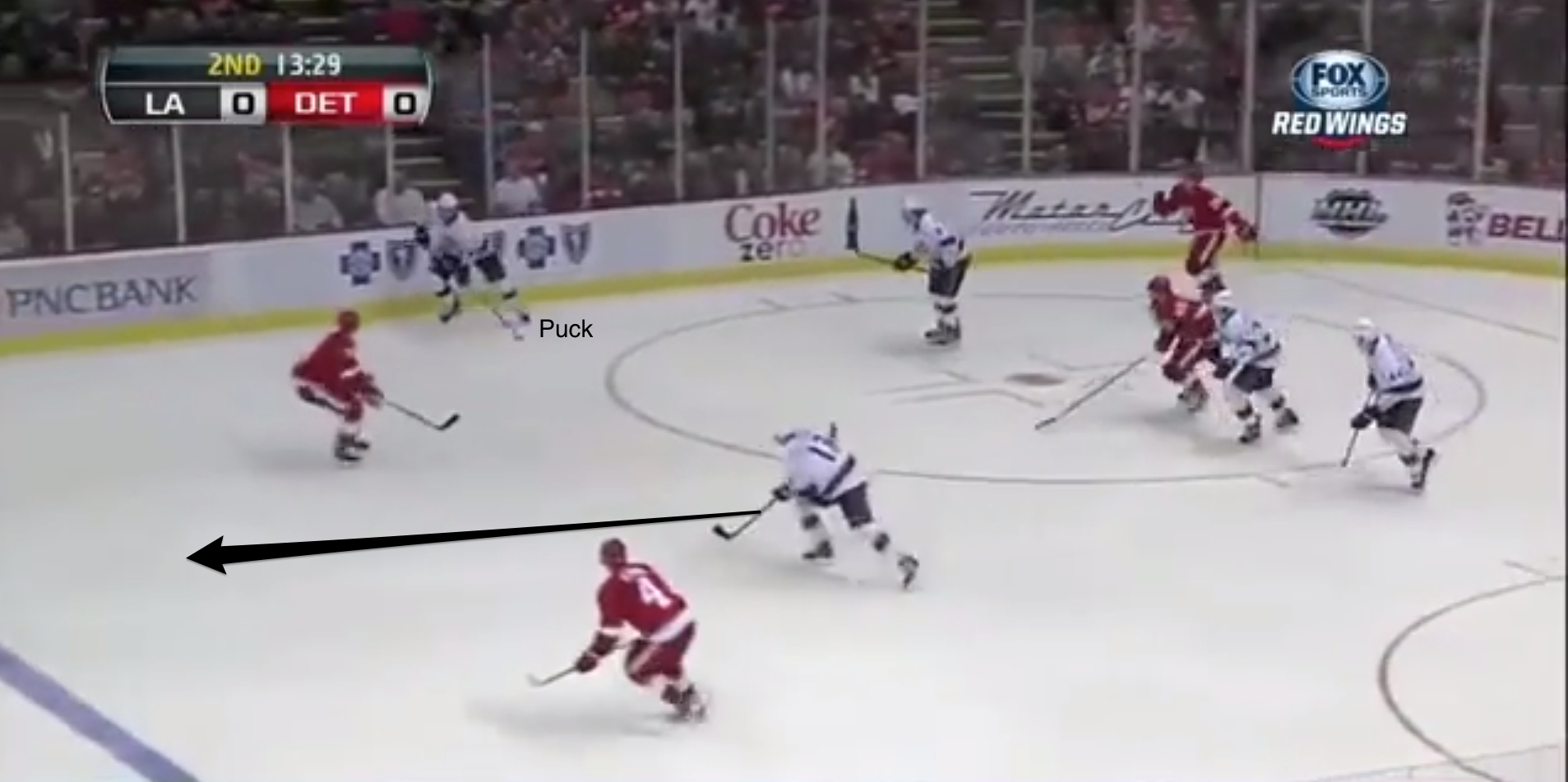
...And the winger drives through the middle to push back the D (another perk of bringing the winger across), and to provide an option for the puck carrier. Now they've got another chance to play chip and chase.
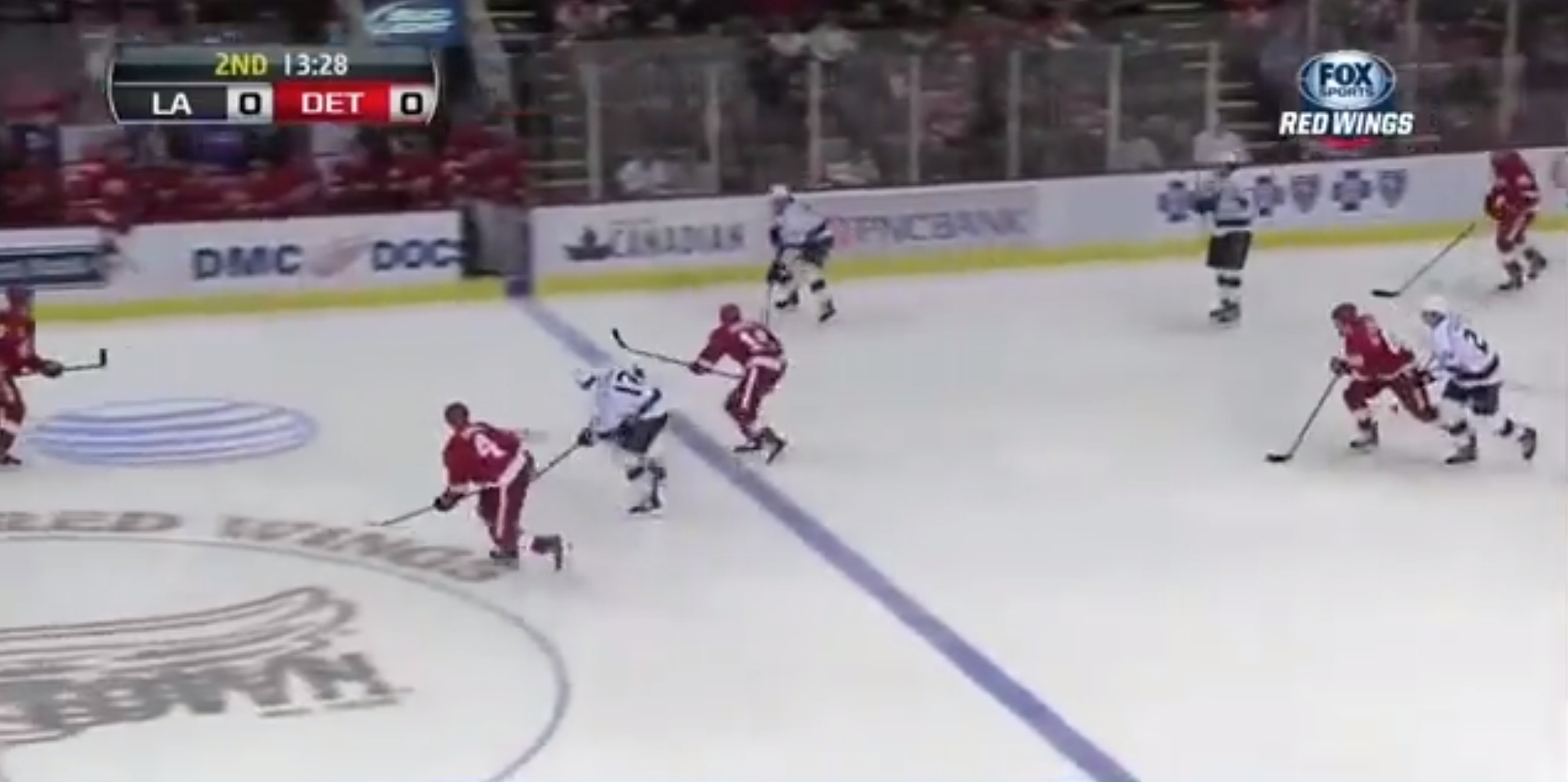
And finally, this highlights just how aggressively they want that weak side help. Dustin Brown starts to support the puck...
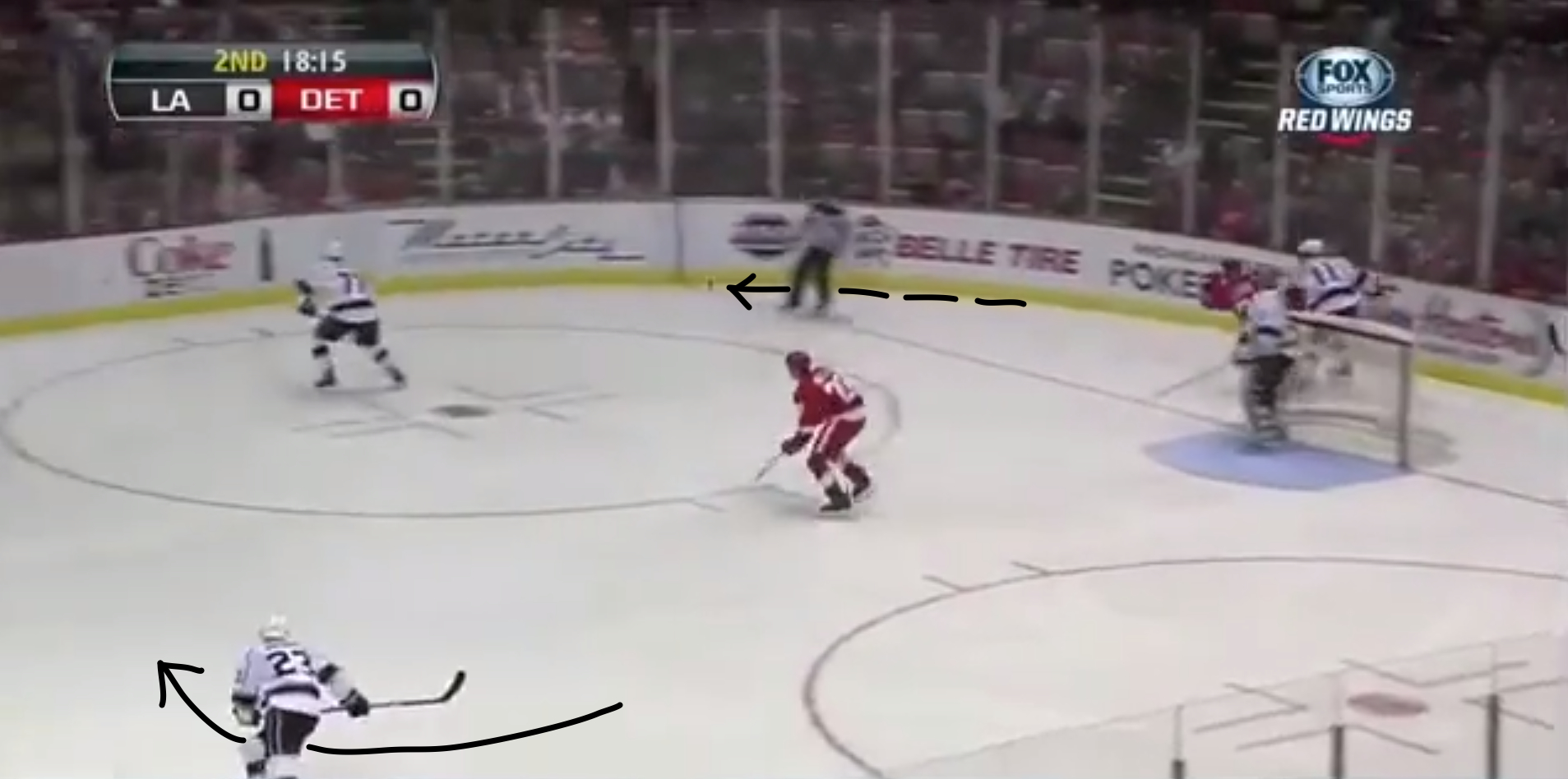
And when it becomes a puck battle instead of a clean exit, he actually helps clear the D-zone from the far wall. (This actually results in a scoring chance the other way, but GIFs can only be so long.)
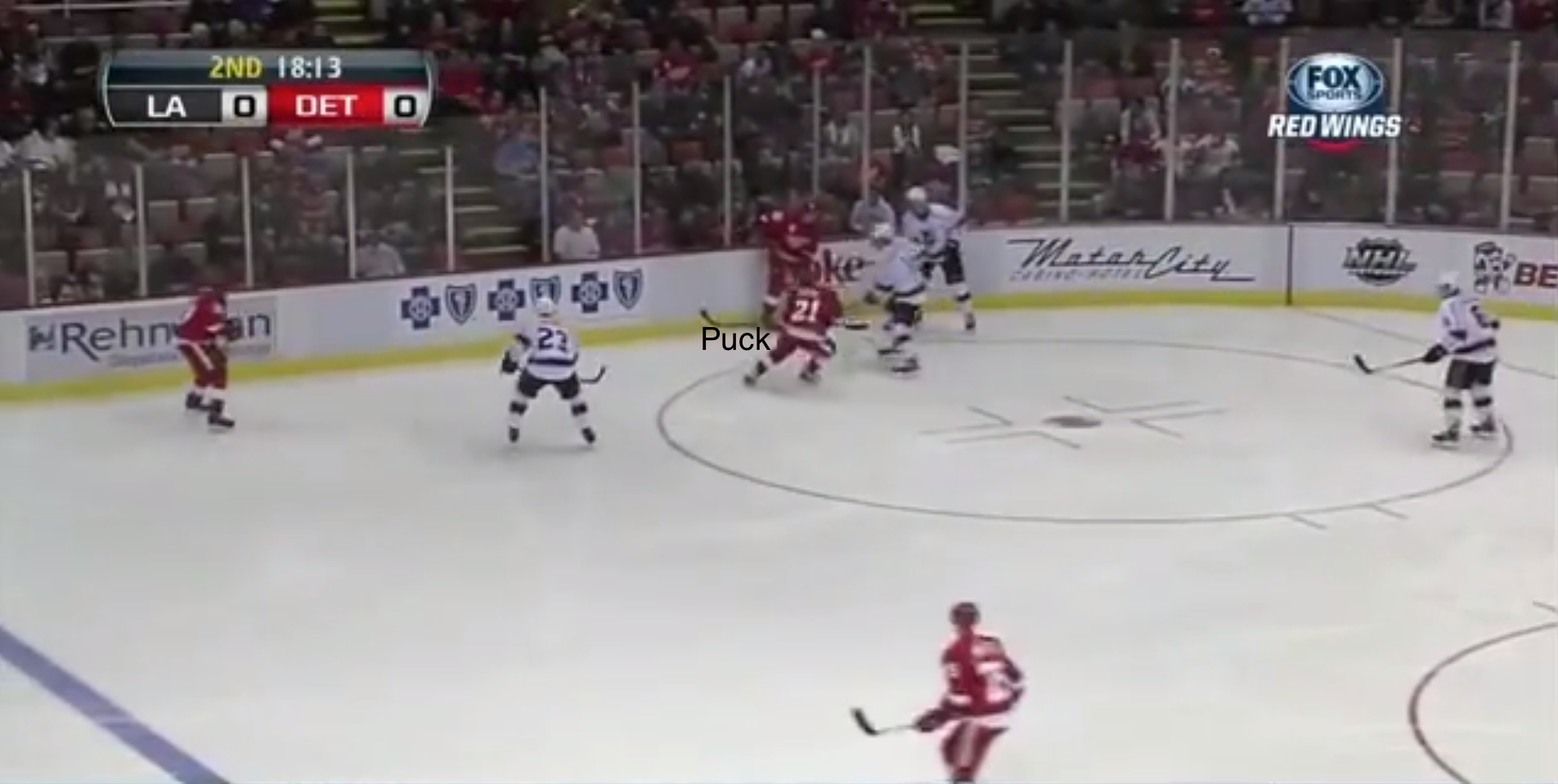
As we noted in the numbers section, the Kings aren’t all that fussed on the carrying the puck into the zone even though they had good success when they tried (particularly when their defenders did the carrying). Remember, they were bottom five in “percent of total entries with control” because there’s more than one way to skin a hockey game.
As you see below, the puck carrier expects the support provided by Justin Williams across the ice, so as he gains the red, he’s able to chuck it somewhere that Williams can be the first man on it (or draw a penalty trying).
That’s another perk of bringing the winger across - he can really get his speed up.
That’s kind of a crappy dump (too hard, into the trapezoid), but we’ll ignore that.
So what made the Kings so great at puck acquisition? What made them the number two team in the NHL at generating shots off dump-ins?
The combination of that support, and being a team that was coached to bang. They were aggressive on pucks, and rushed teams with the guarantee they were going to get hit every time they touched the puck. You don’t have to knock guys down to provide that pressure, as seen below.
The Kings finished number one in the NHL in hits (third in road hits), which is doubly impressive when you consider that they also owned the puck.
The moral of the story is, wherever the puck went, the Kings clustered around it for one another.

It’s a near-romantic way to think about the team that went on to win the Cup. One that should satisfy old school hockey fans, as well as stat fans. They were a great puck possession team by any metric, and they did it by supporting each other and banging bodies. What’s not to love? (Don’t answer, Rangers fans.)